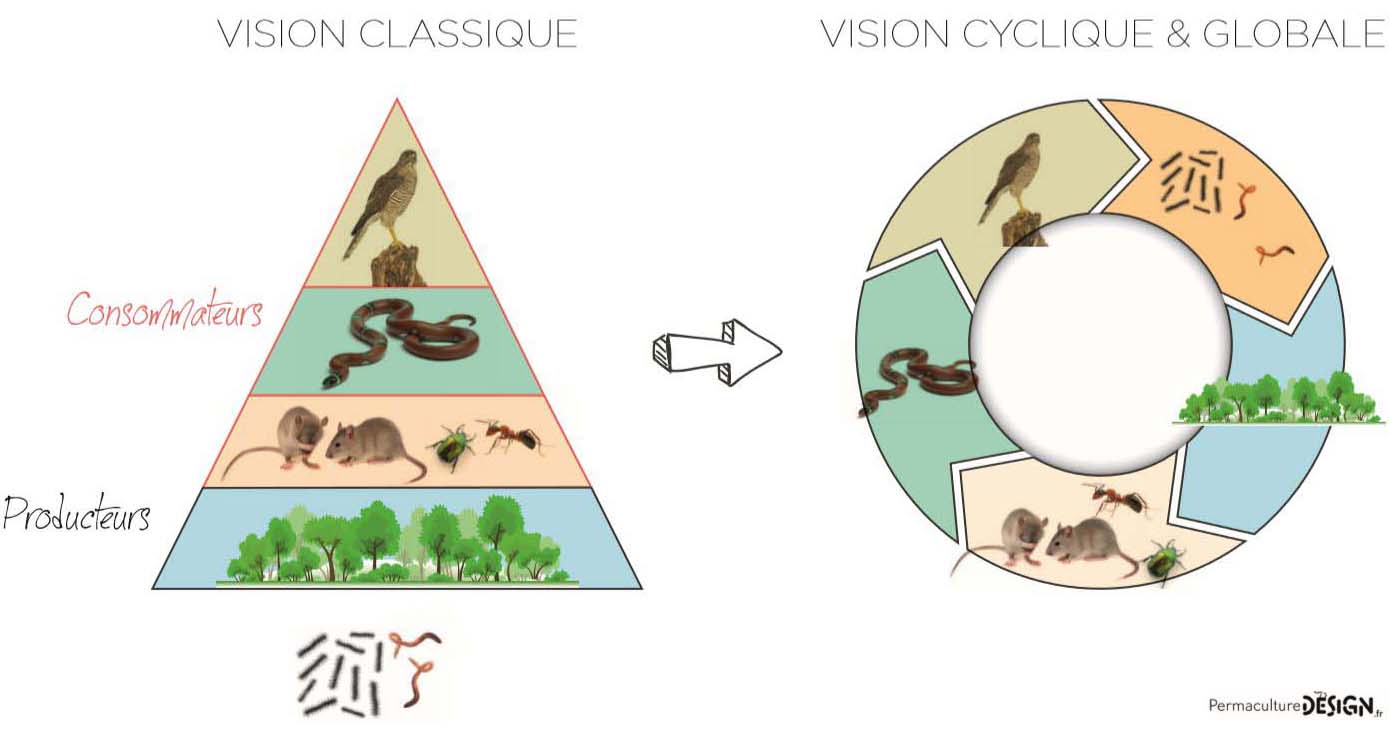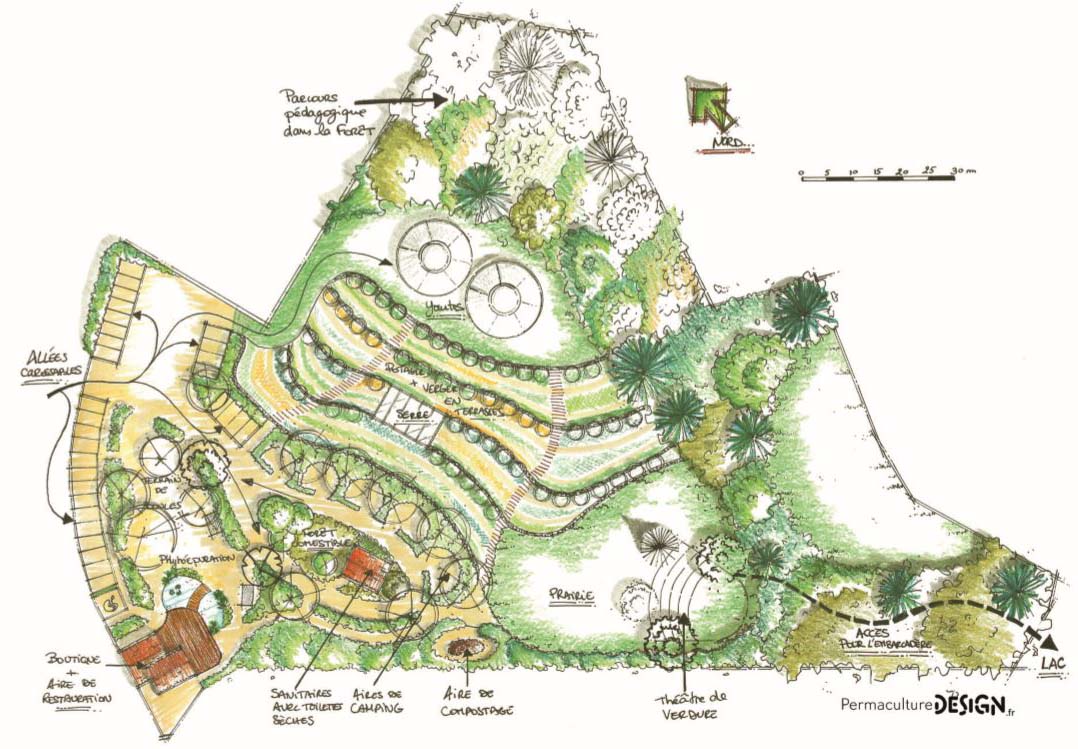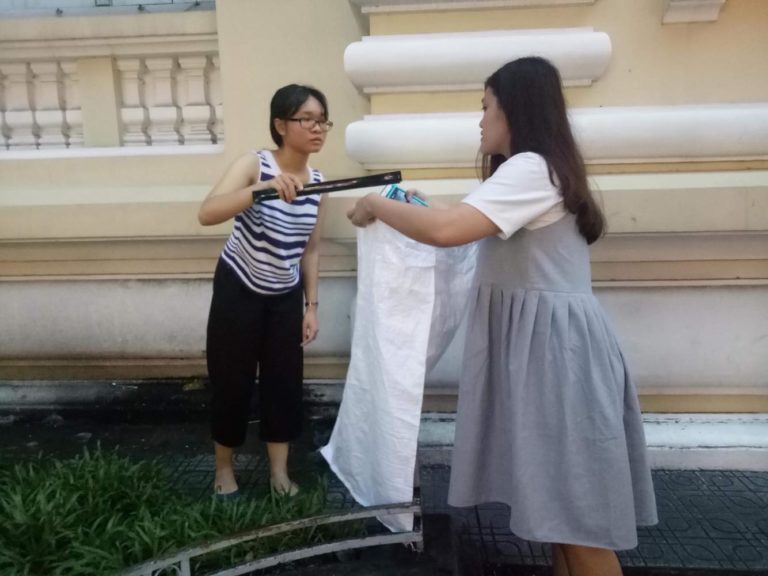Permaculture
Permaculture (a word made of “culture” and “permanent”) is a sustainable way of farming, consisting in designing sustainable and efficient systems. This philosophy, stamped with strong ethical code is becoming more well-known because it is being used more and more in agriculture. You can apply the concept to a larger scale (private life, in our society…). The philosophy made up of three ethical values which are the pillars: care about humans and earth, and redistribution of benefits.
During the 70s, two Australians Bill Mollison and David Holmgren published a book, in which they explain the concept of permaculture. They have been inspired by different ways of life and farming, both old and new, and the concept keeps evolving as Science continues to make headway in this area.
As Claude Bourguignon, a French researcher has explained for many years, every cereal, fruit or vegetable that you buy in the food industry is treated with at least three chemical pesticides and/or fertilizers, in order to protect it from insects. The consequence of such use of these bad products is catastrophic for the soils and by extension the quality of the products. As he says, 80% of our biomass is in our soils, and in France for example, we have already destroyed 90% of it. Indeed, all the microorganisms giving the needed nutrients to the plants are dying. The impoverishment of the biomass makes the soil compact, and prevents water to infiltrate, what normally nourishes the microorganisms. Ground erosion is also due to an ancestral practice: plowing. Indeed, even if this way of thinking is not shared by all farmers, Claude Bourguignon explains that turning the soil over and using pesticides impoverishes the ground in the worst way and makes it impenetrable for the water.
So this soil impoverishment leads to lowering the productivity of the soils and the quality of the products. In this context, some farmers joined the movement and started permaculture to make their soil richer. Different techniques (old and new) help farmers to increase their soil fertility by creating real ecosystems in which each microorganism has a precise role to play. The most common growing mode is the cultivation on mound. Indeed, this method allows an increase of 20% of the cultivable lands and an enrichment of the soils; and its output is far superior when compared with plowing. This technique is justified by the vision of the food chain. Indeed, we traditionally see it as a pyramid, but in permaculture, it is a circular vision. That means that every link in the food chain has a double role: they eat some living being and they feed others by being eaten or with their droppings for example. Let’s take a tomato cultivation threatened by aphids. Two reactions possible for the farmer. In a traditional way, the farmer would treat the plants with insecticides to eradicate them. But in the permacultural process, instead of putting chemical products, the farmer would introduce ladybird (they are fond of tomatoes) in to the ecosystem to regulate the number of aphids in a natural way, without destroying every living organism. And over time, the presence of ladybirds will have positive consequences on the biomass by pollinating flowers for example.


Traditional vision of the food chain (pyramid) & in permaculture (circular) – (©Le Guide du Permaculteur Débutant – V2)
Thus, the precise aim of permaculture is to optimize the ecosystems, by helping them to be as rich as possible. But this optimization will be done in a natural way by including insects, animals and natural microorganisms. To do that, farmers are helped with an everyday improved knowledge on how our environment works. It is the same method for natural sources of energy in the farms. They have found a nice alternative to greenhouse cultivation at “La Ferme du Bec Hellouin”, a reference in French permaculture. In France, every greenhouse is heated with electricity, but in this precise farm, they produce natural heat. The plants needing a lot of heat are placed above chickens or any animals, to benefit from this natural heat. Here, every element of the ecosystem of the greenhouse is used to contribute to the well-being of the others. This is clearly the circular vision of the food chain, where every living being has multiple roles within the ecosystem. Along the same lines, putting fragile plants in a forest will be full of positive effects. We can think about the protection the forest gives during a storm for example. The trees will also, with their falling leaves, give nutrients to microorganisms nourishing the plants, contributing to the enrichment of the ecosystem.
After having explained all that, you should have it: the design is the basic tool of the permaculture farmer. Indeed, to be able to optimize his ecosystem, he has to imagine and design it, with the help of all the scientific knowledge that he can find. The aim is to identify the positive and negative effects of every element, and put them in the right place to contribute positively to the ecosystem. Designing is organizing all the microorganisms, giving them a proper role to play in the ecosystem. By choosing to put a plant at a precise place, the farmer trys to foresee their repercussions on their environment. We could do a comparison with the Silicon Valley. Indeed, there is a share of the skills of each other so they can create the technologies of tomorrow. This melting pot leads to great discoveries, and permaculture is the same concept: putting elements with different skills/attributes to have the most productive ground possible.
Here is an example of a ground design – (©Le Guide du Permaculteur Débutant – V2)
Across this presentation of the concept of permaculture, the objective is to show great initiatives emerging from everywhere in the world, with a common goal: minimize our negative impacts on our environment. It it proves that the situation is not irreversible, because thanks to this kind of initiative, we can improve our passing on earth. We have dealt with big projects here, because they are the most visible example, but you can start your own permaculture experience at home with a little vegetable garden for example. You can also make your own compost to feed your plants. You can imagine the design of the ecosystem you want to create. For that, you have plenty of resources on the internet, but you can also use a specialized company who will help design and create in actuality your permaculture garden.
We hope you enjoyed this little presentation, feel free to ask us questions if you have some, we would be pleased to answer. In the next article, we will make focus on some permaculture farms around the world.
SOURCES
https://www.permaculturedesign.fr/
https://izap4u.com/izap4u-documentaires/zap-180-introduction-a-permaculture-fr/





